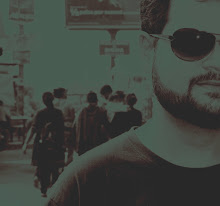 |
| Humpty, and his Dulhania! |
Convinced for another watch, 500th week run,
DDLJ for me has always been fun!
Remember that phone-booking, one show at the plex,
No cleavages shown, no muscles to flex,
Yet that aura of silly romance and charm,
Still makes us smile, assuring no harm.
And, almost two decades, there’s a remake of the same,
The rules have changed, but not entirely the game.
The girl from Ambala demands a designer wear,
Moves to Delhi, unknowingly falls in ‘pyaar’!
The guy, garrulous, blessed with happy feet,
Helps her, loves her, and offers a beer treat.
But as destined by the screenplay here,
She has to return home soon,
The hero follows, to her town, to her own room.
He has to compete with the NRI groom to prove his mettle,
The tough ‘bauji’, as usual, would finally settle
The marriage, and give his daughter away,
A patriarch staunch has, after all, the final say.
So the two hours, and almost a half, is woven around this
story,
For all the fans of Bollywood by now, know who will get the
‘gori’!
And, if you are a DDLJ freak, you will love the references
more,
And, if you aren’t, no problem, for there’s someone else to
adore,
A celebration called Alia Bhatt, who shines and shines to
glory,
A natural star, ‘hot’ by birth she claims, the star of this
story.
She’s no Kajol, nor meant to be, poetic as her name,
And so does Varun, the SRK –part, slowly rising to fame.
The NRI, a doctor, Siddharth puts up his best,
Screen-time short, let down compared to the rest.
Gaurav and Sahil as Humpty's friends, surely steal the show,
The music, in parts is good, some high on spirits, some low.
Gaurav and Sahil as Humpty's friends, surely steal the show,
The music, in parts is good, some high on spirits, some low.
Still songs galore, but one remains, long after they are gone,
Arijit Singh and Shreya’s duet, heart-melting ‘Samjhawaan’!
Shashank Khaitan’s directorial debut is a tale cleverly crafted,
The source at times well-dissolved and diffused, and
dissipated.
The man behind this cunning work is the man, who knows what
sells,
Johar catering to a newer generation; he dares, he retells.
No one here takes Hindi films, seriously I can vouch,
Inspite of being a rom-com trash, worth-watching on your
couch,
The film here differs vastly from the source from where it takes,
And changes a perception of a daddy-dear, and daringly
makes,
Him a loving son, a caring hubby and a father oh, so cute,
Unlike our ‘bauji’ in Amrish Puri, a patriarch, (ah! Such a
brute!)
Whose wife laments in a long sequence, how women are
deprived in life,
How she had been a victim throughout, as a daughter, a
sister or a wife!
The father listens to the daughter; the father, to the wife,
Unlike his former counterpart, where chauvinism ran rife.
The father listens to the daughter; the father, to the wife,
Unlike his former counterpart, where chauvinism ran rife.
Portrayals of clichés and stereotypes change and change so
well,
Poised portrayal, and by no means, the script do they fail.
If such a remake, and finer acts, are served with cunning
and wit,
None can ‘admit impediments’, ‘Humpty promise’, it will all
be a super hit!
And those, in search of ‘good’ Hindli films,
Might now no more wander,
For in three months comes Bharadwaj’s ‘Hamlet’,
Where Shahid avenges in ‘Haidar’!
PC : Google.com
PC : Google.com






